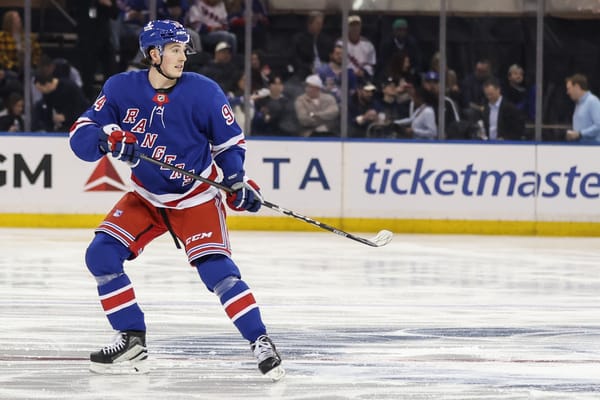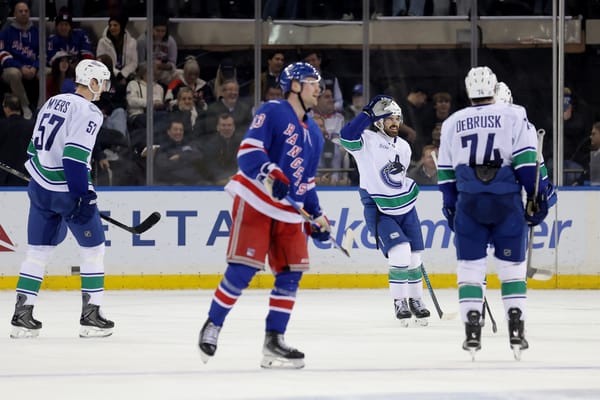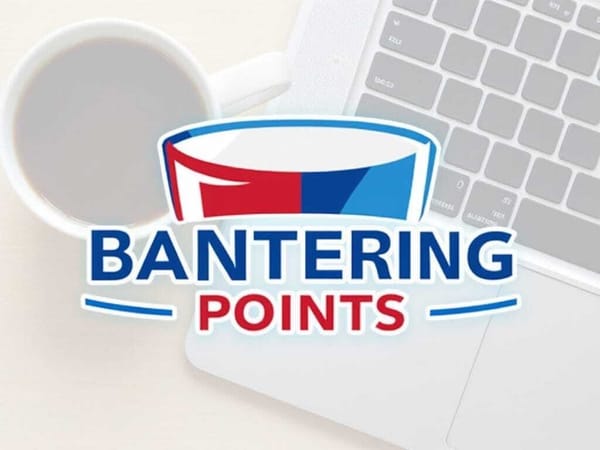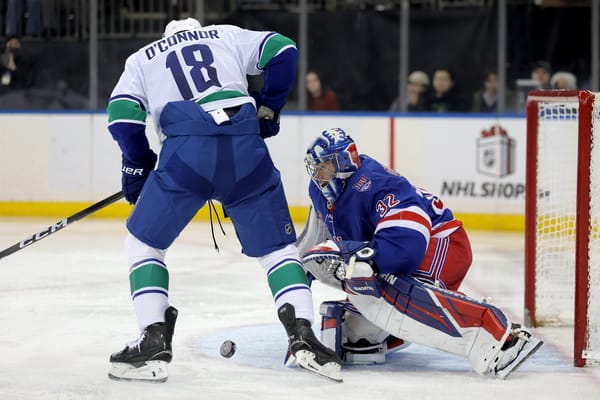The Economics of Vegas Expansion (Part 2)
Bribes, Exports & Motives
Now that we combed over the basics in Part One of this series, in this installation I’d like to introduce a few concepts that I think are being overlooked in the various mock drafts which have begun to percolate. To me, there are dynamics in play that are to be far, far more multi-pronged than simply a list of thirty selections from thirty teams.
Since Part One, the invaluable CapFriendly tweeted out a summation of the expansion timeline. And in case you were unaware, they also provide a wonderful mock-draft tool to tinker and explore at your own pace. Definitely worth a look.
The Exposure Crunch: It Only Gets Worse for Vegas
When I say the crunch, I want you to think of a game of musical chairs. There are three games of musical chairs looming for forwards, defensemen, and goalies. Chairs are like protection spots, and Vegas is going to have its pick of the litter among all the chairless assets exposable in expansion.
What recourse do teams have? They have a few to exercise between now and June 17th.
First: teams can find trade partners of mutual benefit. Team X, with too many defensemen and a deficit of forwards, should cut a deal with Team Y, who have too many forwards to protect & a deficit of defensemen. Simply trading a forward for a defensemen, in this case, would provide mutual benefit for both parties, shutting Vegas out of potential equity.
An example of this could be Nashville (with only three protection spots over four quality defensemen in Ekholm, Ellis, Josi & Subban, if they elect to protect 7F/3D/1G) trading a D to Minnesota for a forward (with only seven protection spots over Coyle, Granlund, Koivu, Niederreiter Parise, Pominville, Staal, & Zucker).
Second: teams can buyout players they deem “bad contracts”, particularly those with a No-Movement Clause, which would otherwise require the team to protect. An example of this may be Anaheim buying out Bieksa, whom they are required to protect (barring a trade or NMC waive), so the Ducks can protect Fowler, Lindholm & Vatanen. If the Ducks’ priority is to protect Fowler, Lindholm, and Vatanen, relieving themselves of Bieska’s contract would allow them to protect 7F/3D/1G instead of 8 skaters/1G.
Third: even the most blundered front offices in the league are smart enough to wait for the expansion draft to end to re-sign pending unrestricted free agents. In many cases it is simply a no-brainer, as signing a new contract June 15 compromises the finite number of protection spots, whereas signing a new contract June 20 is completely free of any expansion nuisance. This means the quality of selection is only going worsen for Vegas, as teams will make moves to protect, not compromise, their assets as we boil down to June.
We saw the Islanders take advantage of a different type of crunch a few years back: in the summer of 2013, the NHL salary cap dipped from $71.4 to $64.3 million, in the wake of the 2012 work stoppage that threw a wrench in the cap’s year-to-year stability that summer. Lo and behold, the Islanders were able to acquire Boychuk & Leddy for a relatively cheap basket of draft picks.
Why?
Because Boston (Boychuk) and Chicago (Leddy) were suddenly crunched for cap space, having loaded up to the ceiling for 2013 playoff contention. Apparently both teams were unable to unload salary that summer in any better fashion, and the Islanders (with conversely plenty of cap space) eventually benefitted from a leaguewide cap crunch.
However in this sense, we’re dealing with finite protection spots rather than finite cap space. And instead of a few salary-heavy teams in 2013, it’s now the vast majority of teams finding themselves juggling their protection spots, frantically searching room to optimize.
Vegas Motives: Sense of Self & the October Waiver Wire
There has been some discussion as to how Nevada Navigator George McPhee will approach the team.
Without getting too elaborate on business and financial gravity, let’s just review: this is the same league that, for a time, operated the Phoenix Arizona Coyotes and paid to keep them solvent. However, the league now has revenue sharing. The league has accepted nine figures from Bill Foley to give him an NHL franchise, so even under the worst five-or-ten-year scenarios, Vegas is going to be safe – hell or high water, for at least a decade, I dare assume.
So with that I am going to assume that McPhee will have an overarching drive to acquire futures, rather than older-but-still-productive roster players, in many spots. I am going to assume McPhee is content with a few “tough” seasons, if it means a few rounds of lottery draft picks and perennial salesmanship at the trade deadline. With that, just know a lot of our earth-scorching hot takes are of that mission statement in mind.
Remember, this is an organization that must rely on means outside the raw expansion process, for constructing a pipeline basically from scratch (save Duke Reid, as well as it’s standard basket of assigned draft picks, as of now).
That said, here’s a brief concept we introduced in Part One:
I don’t know how much money Vegas will have to burn. Will the team be financially able to absorb unwanted heaps of salary in the interest of harvesting futures for down the road? Whatever the answer, it shouldn’t affect the incentives of the actual expansion draft; you can only protect ~23 (max) of the selections from autumn waivers. So flipping at least seven bodies to secure an equitable gain (of some form) should, likely, exist is an invariable strategy.
Lest we forget, Vegas will be as accessed a participant in 2017 free agency as any of the thirty teams. So when I say seven bodies, that would be assuming 23 expansion selections make the pro roster, and maybe 2 players can be safely put in the AHL. But if we see Vegas signing roster players in July? For every roster-oriented free agent signing for Vegas, that’s another expansion selection they’ll need to flip.
The idea being, the vast majority (if not all) of McPhee’s thirty expansion selections will be waivers-eligible. However, a team can only have up to twenty-three players on its roster (excluding injured reserve) when the season opens. The collision is picking more players than can be kept, so the degree is not if but rather how much.
With this in mind, it’s only natural to anticipate not only NHL trades from other teams in anticipation of the expansion draft... but additionally, Vegas themselves being active traders from June to potentially October!
So, before even touching specific players and names to jot down in a mock draft, here is a spectrum of Vegas’ post-expansion summer plans regarding their pro-roster:
We’re speculating that Vegas will retain anywhere from 12 to 22 of its thirty expansion selections (remember, Radim Shipachyov already represents one roster spot). Most of the jettisoned selection spots fall under a category we’ll call “bribes and exports.”
Bribes & Exports
In his wonderful 30 Thoughts column, Elliotte Friedman reported that Vegas is well aware of the manufactured element in trades a la this expansion process:
At the GM meetings, the Golden Knights’ George McPhee let everyone know that once the lists are handed to him, it’s an auction for any unprotected player another team might want. This has outstanding potential.
“Bribes” are when a team gives assets to Vegas in a trade, where a condition of the trade is for Vegas to make an arranged selection in the draft. To be specific, it could be a few different methodologies of bribing:
- A team bribing Vegas to take a particular player: for instance, the Rangers giving the VGK a draft pick to select Klein (as opposed to otherwise-available Fast, Grabner, Lindberg, or Raanta).
- A team bribing Vegas to not take a particular player: for instance, Pittsburgh giving VGK a draft pick to not select Fleury or Murray.
- A team bribing Vegas to select a particular player from a third party team and ship them over: for instance, Colorado giving VGK a draft pick to select Schlemko from San Jose and promptly trade him to the Avs./
Wielding these types of maneuverabilities will help Vegas turn the conundrum of only being able to keep 12-22 of its 30 selections into yet another avenue of acquiring assets and equity from its newfound league neighborhood. And as we discussed earlier in the article, it’s a good bet Vegas will already be in the attitude of acquiring futures, as most expansion franchises are generally in build-up mode for at least a few years upon inception.
“Exports” are expansion selections that are made with resale/trade value being chief, as opposed to the selection’s actual value to the 2017-18 VGK season.
For example: Vegas selects Shattenkirk from Washington. Vegas has no intention to offer Shattenkirk a massive contract, but rather select him primarily to sell his exclusive negotiating rights immediately. The typical pattern is a few of the “high tier” outgoing unrestricted free agents will have their rights traded for a draft pick in mid-to-late June. This represents a fairly safe and predictable means of Vegas converting a few expansion selections into draft picks with relative convenience and quickness, if not outright loading up a desirable trade chip.
Selecting a player a few weeks away from the open market is obviously an extreme of exporting – this can be done just the same with players under contract beyond 2017 – but goes to show a real dynamic of profitable liquidity for Vegas to exploit.
One other aspect of exportation: Vegas will have the same functions as other NHL teams effective immediately, which means so too can Vegas retain up to three simultaneous salaries in trades. With this in mind, Vegas has a few opportunities to “flip” an expansion selection on the market.
Take Jack Johnson of Columbus; with a salary of $5 million per year until July 2018, he doesn’t stick out as a particularly economic nor horrid contract. However, what if Vegas selects Johnson and then dangles him on the trade block as an effective $2.5 million contract, willing to retain 50% of salary? Not only does his trade value intensify, but it coincides very nicely with Vegas acting as a team capable of using wide open cap space to better itself on the market.
Players unattractively at X cap hit can ostensibly be converted to 1⁄2 X cap hit players if a team is willing to eat salary. Depending on Foley’s willingness to finance, as well as the amount of available cap space, this can very much lend itself to effectively paying cash for better trade returns. Certainly not a concept I would put past an NHL start-up, all else equal.
Or how about a sign-and-trade? Let’s say Vegas selects player X in expansion, signs him to a deal in June, gives him a nice (Nevada-tax-haven) signing bonus in July, and trades him elsewhere in August... all by premeditated design. Such a coordinated effort is just another means for McPhee to creatively squeeze extra equity from one of his thirty selections.
Waste Management
Everybody has garbage and everybody wants to be able to dispose of their garbage when too much of it accumulates. Well, it turns out NHL franchises are a lot like suburban households. Look no further than the 2013 and 2014 amnesty buyouts, which were designed to relieve teams of a fluctuating salary cap during a teetering collective bargaining agreement (or there lack of)... but ultimately ended up bailing out some teams that would have executed those same amnesty buyouts even if there were no cap at all!
In this case, Vegas may very well represent a softer reincarnation of amnesty buyouts.
Teams giving Vegas futures to absorb “bad” contracts, whether it be in the expansion draft or through independent trade at a different point, is very much possible. It would fit with a build-up mentality, as well as relieve cap-strapped teams of burden (and many cap-strapped teams are of the mindset of cup contention, thus are usually the ones most willing to part with draft picks & prospects for sustainability).
An example of this could be Los Angeles giving Vegas futures to absorb the contract D. Brown or Gaborik in a post-expansion trade. Or perhaps Dallas shelling out prospects to relieve themselves of Niemi or Lehtonen by shipping one to Vegas, as to make room for the newly-acquired Bishop.
Many smaller-market teams with financial constraints, just as determined to eject bad contract(s) as the richer teams, may only be able to pay futures for such removal than actual cold hard cash in a conventional buyout. If this is the case, look for Vegas to absorb a bad contract or two.
So in theory, Vegas could be bribed to absorb a “bad” contract in expansion, and then be paid yet again for the same player if traded, with salary retained, as a superior bang-for-buck. Talk about having one’s cake and eating it too.
If Vegas does what it should and goes wild making deals, there should be market inefficiencies to exploit. It's going to be a fun summer.
— Ian Fleming 🗽 (@imfleming16) May 10, 2017
Conclusion
Ultimately there is both an art and a science to what Vegas “should” do, and why. Whether it’s contorting to meet league quotas, concentrating on immediate success in 2018, or conducting backroom deals in the interest of creating a resurgent prospect pipeline for later on down the road... there is a lot more to all this than thirty picks, from thirty teams.
The pressure is on for the Golden Knights as they have been given more opportunities to be competitive off the bat, in comparison to the expansion teams of yesteryear. However they still need to prioritize an exciting product to build up to have fans grow with the team each season, along with throwing together veterans and more well-known names for exposure opportunities.
I would anticipate one of the most active off-seasons in the salary cap era, if not the most memorable.
Lest we forget, this is an unprecedented NHL expansion process culminating with the epitome of an unconventional hockey market.




